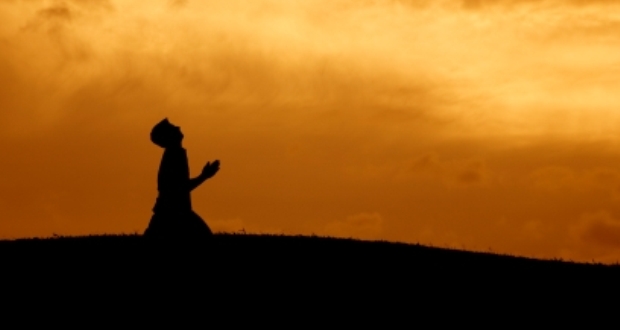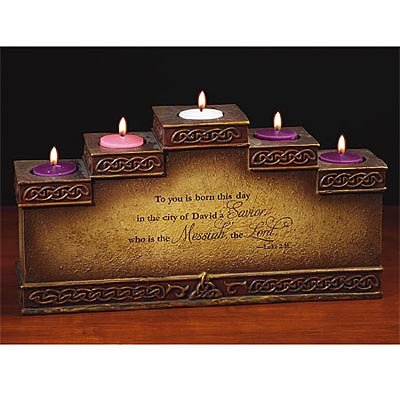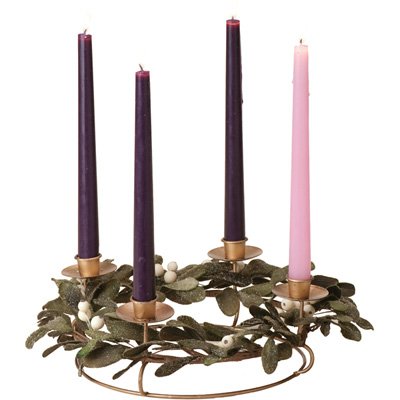About Advent

Advent – Introduction
In keeping with current [1907] usage, Advent is a duration beginning with the Sunday closest to the feast of St. Andrew the Apostle (30 November) and embracing 4 Sundays. The very first Sunday may be as early as 27 November, and then Advent has twenty-eight days, or as late as 3 December, providing the period just twenty-one days.
With Advent the ecclesiastical year starts in the Western churches. During this time the faithful are admonished to prepare themselves worthily to celebrate the anniversary of the Lord’s coming into the world as the incarnate God of love, therefore to make their souls fitting homes for the Redeemer being available in Holy Communion and through grace, and consequently to make themselves ready for His final coming as judge, at death and at the end of the world.
Significance Of Advent
To attain this item the Church has actually arranged the Liturgy for this season. In the formal prayer, the Breviary, she calls upon her ministers, in the Invitatory for Matins, to love “the Lord the King that is to come”, “the Lord currently near”, “Him Whose glory will certainly be seen on the morrow”. As Lessons for the very first Nocturn she prescribes chapters from the prophet Isaias, who talks in caustic regards to the ingratitude of the house of Israel, the chosen youngsters who had forsaken and forgotten their Father; who informs of the Man of Sorrows stricken for the sins of His people; who explains accurately the passion and death of the coming Saviour and His last glory; who announces the event of the Gentiles to the Holy Hill.
In the second Nocturn the Lessons on 3 Sundays are taken from the eighth homily of Pope St. Leo (440-461) on fasting and alms deeds as a preparation for the advent of the Lord, and on one Sunday (the second) from St. Jerome’s comments on Isaiah 11:1, which text he translates of the Blessed Virgin Mary as “the rod from the root of Jesse”. In the hymns of the period we discover appreciation for the coming of Christ, the Developer of the universe, as Redeemer, incorporated with prayer to the coming judge of the world to secure us from the adversary.
Comparable ideas are shown in the antiphons for the Magnificat on the last seven days before the Vigil of the Nativity. In them, the Church gets in touch with the Divine Knowledge to teach us the means of prudence; on the Trick of David to release us from bondage; on the Rising Sunlight to illuminate us sitting in darkness and the shadow of death, etc.
 In the Masses the intention of the Church is shown in the selection of the Epistles and Gospels. In the Epistle she exhorts the faithful that, since the Redeemer is nearer, they should cast aside the works of darkness and apply the armor of light; ought to walk truthfully, as in the day, and put on the Lord Jesus Christ; she shows that the countries are called to praise the name of the Lord; she asks them to rejoice in the nearness of the Lord, so that the price of God, which exceeds all understanding, could keep their hearts and minds in Christ Jesus; she admonishes them not to pass judgment, for the Lord, when He comes, will manifest the secrets hidden in hearts.
In the Masses the intention of the Church is shown in the selection of the Epistles and Gospels. In the Epistle she exhorts the faithful that, since the Redeemer is nearer, they should cast aside the works of darkness and apply the armor of light; ought to walk truthfully, as in the day, and put on the Lord Jesus Christ; she shows that the countries are called to praise the name of the Lord; she asks them to rejoice in the nearness of the Lord, so that the price of God, which exceeds all understanding, could keep their hearts and minds in Christ Jesus; she admonishes them not to pass judgment, for the Lord, when He comes, will manifest the secrets hidden in hearts.
In the Gospels during Advent, the Church mentions the Lord can be found in glory; of Him in, and with, Whom the prophecies are being fulfilled; of the Eternal walking in the midst of the Jews; of the voice in the desert, “Prepare ye the method of the Lord”. The Church in her Liturgy during Advent takes us in spirit back to the time before the manifestation of the Son of God, as though it were really yet to occur. Cardinal Wiseman states:
We are not dryly exhorted to profit by that blessed occasion, however we are daily made to sigh with the Dads of old, “Deliver down the dew, ye heavens, from above, and let the clouds rain the Just One: let the planet be opened, and bud forth the Redeemer.” The Collects on three of the 4 Sundays of that period start with the words, “Lord, raise up thy power and come”– as though we feared our iniquities would prevent His being born.
Period and Rituals During Advent
On every day of Advent the Office and Mass of the Sunday or Feria need to be said, or at least a Commemoration needs to be made from them, no matter what grade of feast takes place. In the Divine Office the Te Deum, the happy hymn of appreciation and thanksgiving, is left out; in the Mass the Gloria in excelsis is not stated. The Alleluia, nevertheless, is kept. During this time the solemnization of matrimony (Nuptial Mass and Benediction) can not take place; which prohibition binds to the feast of Epiphany inclusively. The celebrant and sacred ministers make use of violet vestments. The deacon and sub-deacon at Mass, in place of the dalmatics generally utilized, wear folded chasubles.
The subdeacon eliminates his throughout the reading of the Epistle, and the deacon exchanges his for another, or for a wider took, used over the left shoulder during the time in between the singing of the Gospel and the Communion. An exception is produced the 3rd Sunday (Gaudete Sunday), on which the vestments could be rose-coloured, or richer violet ones; the sacred ministers could on this Sunday wear dalmatics, which could also be utilized on the Vigil of the Nativity, even if it be the 4th Sunday of Advent. Pope Innocent III (1198-1216) states that black was the color to be used during Advent, but violet had actually come into use for this season at the end of the thirteenth century. Binterim states that there was also a law that pictures should be covered during Advent. Flowers and relics of Saints are not to be placed on the altars during the Office and Masses of this time, except on the 3rd Sunday; and the exact same prohibition and exception exist in regard to using the organ. The preferred idea that the four weeks of Advent stand for the four thousand years of darkness where the world was enveloped before the coming of Christ finds no verification in the Liturgy.
Historical Origin Of Advent
It can not be figured out with any sort of degree of certainty when the celebration of Advent was first presented into the Church. The preparation for the feast of the Nativity of Our Lord was not held prior to the feast itself existed, and of this we find no evidence prior to the end of the fourth century, when, according to Duchesne [Christian Worship (London, 1904), 260], it was commemorated throughout the whole Church, by some on 25 December, by others on 6 January. Of such a preparation we read in the Acts of a synod held at Saragossa in 380, whose fourth canon suggests that from the seventeenth of December to the feast of the Epiphany no one should be allowed to absent himself from church.
 We have two homilies of St. Maximus, Bishop of Turin (415-466), entitled “In Adventu Domini”, however he makes no reference to a special time. The title might be the addition of a copyist. There are some homilies extant, most likely of St. Caesarius, Bishop of Arles (502-542), in which we find reference of a preparation prior to the birthday of Christ; still, to judge from the context, no basic law on the matter appears then to have been in existence. A synod held (581) at Mâcon, in Gaul, by its nine canon orders that from the eleventh of November to the Nativity the Sacrifice be offered according to the Lenten rite on Monday, Wednesday, and Friday of the week. The Gelasian Sacramentary keeps in mind 5 Sundays for the period; these 5 were decreased to 4 by Pope St. Gregory VII (1073-85). The collection of homilies of St. Gregory the Great (590-604) begins with a sermon for the 2nd Sunday of Advent. In 650 Advent was celebrated in Spain with five Sundays.
We have two homilies of St. Maximus, Bishop of Turin (415-466), entitled “In Adventu Domini”, however he makes no reference to a special time. The title might be the addition of a copyist. There are some homilies extant, most likely of St. Caesarius, Bishop of Arles (502-542), in which we find reference of a preparation prior to the birthday of Christ; still, to judge from the context, no basic law on the matter appears then to have been in existence. A synod held (581) at Mâcon, in Gaul, by its nine canon orders that from the eleventh of November to the Nativity the Sacrifice be offered according to the Lenten rite on Monday, Wednesday, and Friday of the week. The Gelasian Sacramentary keeps in mind 5 Sundays for the period; these 5 were decreased to 4 by Pope St. Gregory VII (1073-85). The collection of homilies of St. Gregory the Great (590-604) begins with a sermon for the 2nd Sunday of Advent. In 650 Advent was celebrated in Spain with five Sundays.
Numerous synods had actually made laws about fasting to be observed throughout this time, some beginning with the eleventh of November, others the fifteenth, and others as early as the autumnal equinox. Other synods forbade the party of matrimony. In the Greek Church we discover no documents for the regard of Advent earlier than the eighth century. St. Theodore the Studite (d. 826), who mentions the feasts and fasts commonly commemorated by the Greeks, makes no reference of this season. In the eighth century we locate it observed not as a liturgical celebration, however as a time of fast and abstinence, from 15 November to the Nativity, which, according to Goar, was later on reduced to seven days. However a council of the Ruthenians (1720) bought the speedy according to the old rule from the fifteenth of November. This is the guideline with a minimum of a few of the Greeks. The Ambrosian and the Mozarabic Riterites have no special liturgy for Advent, but just the fast.
ref – Catholic Encyclopedia






